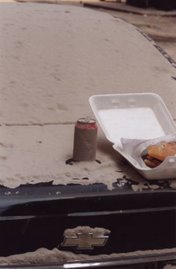The secret of cooking with Kashmiri Saffron
I once posted this question in several food blogs, which should have had someone who knew the answer. There seems to be very shallow knowledge on this subject, most of which was googles of regurgitated gibberish. Most people ignored the "Kashmiri" part, deciding I had asked instead about Spanish saffron, ganging up on me there was no difference. I shall inform the Spaniards they must stop quizzing me about my importation of various Indian spices when I clear their customs. I shall cite as experts the American food networks.
From the Spice House: "The reason saffron is the highest-priced of spices is because of the intensive hand labor required to cultivate and harvest it. It is the stigma of a small purple crocus flower; it takes about an acre of land and 75,000 flowers to yield one pound of saffron. Each flower blooms for only about one week of the year, during which the stigmas must be hand-picked and dried."
Kashmiri saffron is seen as the king of the saffron species in terms of potency. But potency for what? And how shall we use it in foods it to preserve the potency, if we want to unlock its potent properties.
Most people (worldwide) use it as a food dye, as in "Ya want yellow or orange food, dump in the saffron, doesn't that look pretty!" I think they may be missing a point.
Further double-checked investigation reveals that: "Saffron is characterised by a bitter taste and an iodoform- or hay-like fragrance; these are caused by the chemicals picrocrocin and safranal. It also contains a carotenoid dye, crocin, that gives food a rich golden-yellow hue. These traits make saffron a much-sought ingredient in many foods worldwide. Saffron also has medicinal applications."
This cunning little stigma is packed with potential: "Saffron contains more than 150 volatile and aroma-yielding compounds. It also has many nonvolatile active components, many of which are carotenoids, including zeaxanthin, lycopene, and various α- and β-carotenes."
On to this tantalizing tidbit: "The reddish-coloured zeaxanthin is, incidentally, one of the carotenoids naturally present within the retina of the human eye."
In ancient Greece and Persia and Asia and Sumeria and Phoenecia there are references to its medicinal uses. It has aphrodisiac properties. It cured battle wounds. It cured depression. Old Chinese medical texts document: " 252 phytochemical based medical treatments for various disorders.."
All those ancient ignorant people and their myths. Thank goodness the US food industry came along and decided it was just a food dye. This, despite: "Medicinally, saffron has a long history as part of traditional healing; modern medicine has also discovered saffron as having anticarcinogenic (cancer-suppressing), anti-mutagenic (mutation-preventing), immunomodulating, and antioxidant-like properties."
Oh boy, a one-stop medicinal shop, that must be stopped at once! It's the Tesla of Spices!
About Kasmiri saffron: "known as 'Mongra' or 'Lacha' saffron (Crocus sativus 'Cashmirianus'), it is among the most difficult for consumers to obtain. Repeated droughts, blights, and crop failures in Kashmir, combined with an Indian export ban, contribute to its high prices. Kashmiri saffron is recognisable by its extremely dark maroon-purple hue, among the world's darkest, which suggests the saffron's strong flavour, aroma, and colourative effect. "
Call me a suspicious troublemaker, but I think a phytochemical strand that is exponentially stronger in its 200 plus myriad chemicals has something called bio-synergy going for it - which places it in a unique class of bio-active substances.
Truth is modern man (whatever that is) hasn't begun to tap the secrets of Kashmiri saffron in the same way modern man (whatever that is) hasn't begun to tap the secrets of Tesla's inventions. Although we have wonder drugs like penicillin I haven't seen any gravy recipes calling for it. See the point?
The way to use Kashmiri saffron begins with soaking it in warm milk. It has magical properties. Drink the milk. The secret of cooking with it, is "Don't".

0 comments:
Post a Comment